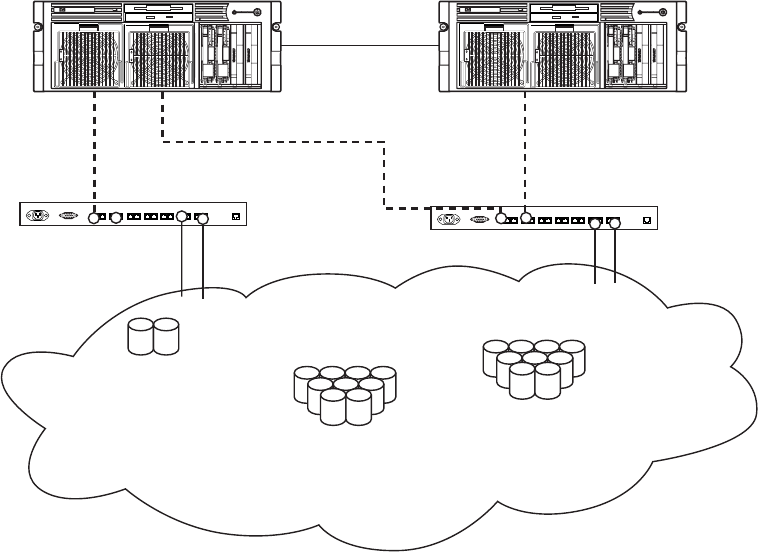Instruction Manual
Table Of Contents
- HP ProLiant SB460c SAN Gateway Storage Server
- Table of Contents
- About this guide
- 1 Storage management overview
- 2 File server management
- File services features in Windows Storage Server 2003 R2
- File services management
- Volume shadow copies
- Folder and share management
- File Server Resource Manager
- Other Windows disk and data management tools
- Additional information and references for file services
- 3 Print services
- 4 Microsoft Services for Network File System (MSNFS)
- MSNFS Features
- MSNFS use scenarios
- MSNFS components
- Administering MSNFS
- Server for NFS
- User Name Mapping
- Microsoft Services for NFS troubleshooting
- Microsoft Services for NFS command-line tools
- Optimizing Server for NFS performance
- Print services for UNIX
- MSNFS components
- 5 Other network file and print services
- 6 Enterprise storage servers
- 7 Cluster administration
- Cluster overview
- Cluster terms and components
- Cluster concepts
- Cluster planning
- Preparing for cluster installation
- Cluster installation
- Configuring cluster service software
- Cluster groups and resources, including file shares
- Print services in a cluster
- Advanced cluster administration procedures
- Additional information and references for cluster services
- 8 Troubleshooting, servicing, and maintenance
- 9 System recovery
- A Regulatory compliance and safety
- Index

Cluster Node A
Node A
HBA 1
Private Network
Node A
HBA 2
Node B
HBA 2
Cluster Node B
Node B
HBA 1
SAN Switch
SAN Switch
Storage Area Network
Cluster
Quorum
Mirrorset
LUN 1
Data RAID set
Node A
LUN 2
Data RAID set
Node B
LUN 3
+
+
+
+
+++++++++++++++++++++++++++++++++++++++++++++++++++
+
+
+
+
+
+
+
+
Figure 25 Storage server cluster diagram
Cluster terms and components
Nodes
The most basic parts of a cluster are the servers, referred to as nodes. A server node is any individual
server in a cluster, or a member of the cluster.
Resources
Hardware and software components that are managed by the cluster service are called cluster
resources. Cluster resources have three defining characteristics:
• They can be brought online and taken offline.
• They can be managed in a cluster.
• They can be owned by only one node at a time.
Examples of cluster resources are IP addresses, network names, physical disk resources, and file
shares. Resources represent individual system components. These resources are organized into groups
and managed as a group. Some resources are created automatically by the system and other resources
must be set up manually. Resource types include:
• IP address resource
• Cluster name resource
• Cluster quorum disk resource
• Physical disk resource
• Virtual server name resources
Cluster administration90










